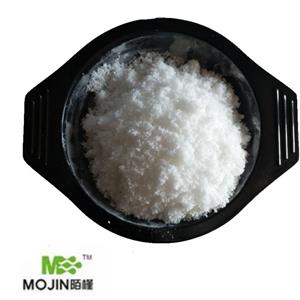
Ammonium bicarbonate NEW
| Price | Get Latest Price |
| Package | 25KG |
| Min. Order: | 1KG |
| Supply Ability: | 50000KG/month |
| Update Time: | 2023-09-12 |
Product Details
| Product Name: Ammonium bicarbonate | CAS No.: 1066-33-7 |
| EC-No.: 213-911-5 | Min. Order: 1KG |
| Purity: 99% | Supply Ability: 50000KG/month |
| Release date: 2023/09/12 |
| CAS: | 1066-33-7 |
| MF: | CH5NO3 |
| MW: | 79.06 |
| EINECS: | 213-911-5 |
| Product Categories: | Inorganics;INORGANIC & ORGANIC CHEMICALS;food additive;1066-33-7 |
| Mol File: | 1066-33-7.mol |
 | |
| Ammonium bicarbonate Chemical Properties |
| Melting point | 105 °C |
| Boiling point | 143.04°C (rough estimate) |
| density | 1,586 g/cm3 |
| vapor density | 2.7 (vs air) |
| vapor pressure | 67 hPa (20 °C) |
| refractive index | 1.4164 (estimate) |
| storage temp. | 2-8°C |
| solubility | H2O: 1 M at 20 °C, clear, colorless |
| form | Solid |
| color | White |
| Odor | faint ammonia odor |
| PH | 7.0-8.5 (25℃, 1M in H2O) |
| Water Solubility | 220 g/L (20 oC) |
| λmax | λ: 260 nm Amax: ≤0.030 λ: 280 nm Amax: ≤0.020 |
| Merck | 14,497 |
| BRN | 4329606 |
| Stability: | Stable. Incompatible with strong acids, alkali metals. |
| LogP | -0.809 (est) |
| Dissociation constant | 6.49 at 20℃ |
| CAS DataBase Reference | 1066-33-7(CAS DataBase Reference) |
| EPA Substance Registry System | Ammonium bicarbonate (1066-33-7) |
| Ammonium bicarbonate Usage And Synthesis |
| description | Ammonium bicarbonate is a commonly used reagent for industrial and research procedures. Ammonium bicarbonate is volatile in solution and releases ammonia and CO2. This property makes ammonium bicarbonate a good buffer for such applications as lyophilization and matrix assisted laser desorption. Ammonium bicarbonate is also utilized for the in-gel digestion of proteins by trypsin and in the MALDI mass spectrometric analysis of proteins. Ammonium bicarbonate is used as a baking powder, in some food processing applications, in cough syrups and as antacid. It also has uses as a fertilizer, pH buffer, and reagent in chemical laboratories. In the industry, it is used in the manufacture of dyes, pharmaceuticals, catalysts, ceramics, fire-retardants, plastics and other products. |
| Nitrogen fertilizer | Ammonium bicarbonate is mainly used as fertilizers. After being applied to the soil, the ammonium ion (NH4 +) contained in ammonium bicarbonate can be absorbed by soil colloid or lattice-fixed or transformed into nitrate nitrogen. After being absorbed by plants, there are no accessory constituents remaining in the soil with a small impact on the soil pH. It is applicable to all kinds of soil and crops, soil without leaving any harmful substance residue for the soil and crops. It is quick-acting nitrogen fertilizer and can be subject to long-term usage. In order to prevent the loss of fertilizer efficacy due to ammonia volatilization and the burning of the crop stems and leaves, we can apply deep placement and cover soil. It can be used as basic fertilizer for topdressing, but not suitable to be used as seed manure. When being used for topdressing, we should prevent the drop of ammonium bicarbonate onto the plant, to avoid ammonia hazards. The shortcoming of ammonium bicarbonate as a fertilizer lies in its chemical instability. After the addition of crystalline modifier, the crystal of ammonium bicarbonate is enlarged and the water content is reduced, reducing the phenomenon of easily subjecting to decomposition and agglomeration. Ammonium bicarbonate is one of nitrogen fertilizer industrial products, being the major varieties of small nitrogenous fertilizer plants in China, being one of the purification products of coke oven in the coking plant. Coking plant takes concentrated ammonia as raw materials for reaction with carbon dioxide to generate ammonium bicarbonate crystals with centrifugal filtering to obtain ammonium bicarbonate products. Ammonium bicarbonate is easy to be subject to decomposition. It is appropriate to be packed with the combination of inner plastic film and external plastic bag or 3-layers of kraft paper sacks, both need to be sealed and stored in a warehouse of being cool, low-temperature, dry and ventilated to prevent moisture, rain and sun. |
| Chemical properties | Ammonium bicarbonate appears as white monoclinic or orthorhombic crystals. It is soluble in water, but insoluble in ethanol, carbon disulfide and concentrated ammonia. It dissolves in water to give a mildly alkaline solution. It is insoluble in most organic solvents. While it is stable at room temperature (25 °C), it decomposes at temperatures above 36 °C to form ammonia, carbon dioxide, and water in an endothermic reaction (absorbs energy for the reaction from the surroundings). NH4HCO3 → NH3 + CO2 + H2O Ammonium bicarbonate reacts with acids to produce carbon dioxide, and reacts with bases to produce ammonia. |
| Uses | 1. Ammonium bicarbonate is used as nitrogen fertilizer, being applicable to a variety of soils, can simultaneously provide the ammonium nitrogen and carbon dioxide demanded by crop growth. However, it contains low nitrogen content and is also easy to caking. 2. It can be used as analytical reagent as well as being used in synthesizing ammonium salt and fabric degreasing. 3. It can promote crop growth and photosynthesis; trigger seedlings and the growth of leaves. It can be used as topdressing as well as being directly applied as ground fertilizer as food leavening agent and bulking agent. 4. Ammonium bicarbonate can be used as a senior food fermentation agent. Its combination with sodium bicarbonate can be used as the raw materials of leavening agent such as bread, biscuits and pancakes. It can also be used as raw material of foam powder juice, as well as being used for the blanching of green vegetables and bamboo shoots. Moreover, it can be used as medicine and reagents. 5. Alkali; leavening agent; buffer; aerating agent. Its combination with sodium bicarbonate can be used as the raw materials of leavening agent such as bread, biscuits and pancakes. Baking powder also takes this product as the main ingredient, together with the acidic substances. It can also be used as raw material of foam powder juice. The dosage of the blanching of green vegetables and bamboo shoots should be 0.1% to 0.3%. 6. It can be used as analytical reagent; used for ammonium salt synthesis. Pharmaceuticals; baking powder; dyeing; It can be used for fabric degreasing. It can also be used as foamed plastics. |
| Production method | Send the compressed carbon dioxide into the concentrated ammonia, and place it under the carbon dioxide pressure; simultaneously apply cooling; precipitate out the crystal; followed by centrifugal separation and dehydration to obtain the final product. Upon refining, dissolve it in water, and add ethanol to re-crystallize it. Carbonization method: after the ammonia is absorbed by water; apply carbon dioxide for carbonization, followed by separation and drying to produce ammonium bicarbonate. NH3 + CO2 + H2O → NH4HCO3 To the carbon dioxide gas originated from the lime kiln and be subject to cleaning and washing, send the ammonia to saturation, followed by centrifugal separation and hot air drying to obtain the finished products. NH3 + CO2 + H2O → NH4HCO3 |
| Chemical Properties | Ammonium bicarbonate is a white crystalline solid with a faint ammonia odor and soluble in water but insoluble in alcohol and acetone. It decomposes above 35℃ to ammonia, carbon dioxide and water vapor, releasing irritant fumes. Only 30% of the applied nitrogen of this fertilizer is recovered by plants owing to the unstable nature of ammonium bicarbonate. that forms by the reaction of anunonium hydroxide and excess CO2. |
| Physical properties | White crystalline solid; prismatic crystal; faint odor of ammonia; stable at ambient temperature but decomposes on heating at 60°C; melts at 107.5°C on very rapid heating; density 1.586 g/cm3; vapor pressure 435 torr at 25°C; readily dissolves in water (21.6g/100g at 20°C, and 36.6g/100g at 40°C). |
| Uses | Ammonium bicarbonate is a commonly used reagent for industrial and research procedures. It acts a good buffer in lyophilization and matrix assisted laser desorption. It is also utilized for the in-gel digestion of proteins by trypsin and in the MALDI mass spectrometric analysis of proteins. It is also used to make other ammonium compounds, in food processing, and for other uses. Ammonium bicarbonate can be used to study biological buffers. It is also used in a study that demonstrated that ammonium bicarbonate salts, which can be regenerated using low-temperature waste heat, can also produce sufficient voltage for hydrogen gas generation in a microbial reverse-electrodialysis electrolysis cells. It has also been used in a study that developed a fast and sensitive method for the simultaneous determination of Sudan dyes in food samples using partial filling micellar electrokinectic chromatography-mass spectrometry. |
| Uses | Ammonium Bicarbonate is a dough strengthener, a leavening agent, a ph control agent, and a texturizer. prepared by reacting gaseous carbon dioxide with aqueous ammonia. crystals of ammo- nium bicarbonate are precipitated from solution and subsequently washed and dried. Also known as hartshorn and rock ammonia, ammonium bicarbonate is soluble in water but decomposes when heated. It was used in place of ammonia when making ammonia-ripened gelatin emulsions. |
| Definition | ChEBI: Ammonium bicarbonate is an organooxygen compound. It is a buffer applications such as lyophilization and matrix assisted laser desorption. |
| General Description | A white crystalline solid having the odor of ammonia. Soluble in water. The primary hazard is the threat to the environment. Immediate steps should be taken to limit spread to the environment. Used to make other ammonium compounds, in food processing, and for other uses. |
| Air & Water Reactions | Soluble in water. |
| Reactivity Profile | Heat > 36°C ( produces ammonia and carbon dioxide); strong acids and strong bases (CO2 and NH3) [Handling Chemicals Safely 1980 p. 141]. |
| Hazard | Evolves irritating fumes on heating to 35C. |
Packing &shipping&Payment
Shipping:by sea or by air
Payment:T/T,western union,moneygram
Packaging Details drum
Port:Tianjin
Lead Time :
| Quantity(Kilograms) | 1 - 10000 | >10000 |
| Est. Time(days) | 5 | To be negotiated |

 Company information
Company information
Hebei Mojin Biotechnology Co., Ltd, Our company is a professional in 4'-Methylacetophenone,Levamisole hydrochloride ,N-Methylformamide and other chemical reagents research and development production enterprises. Our business covers more than 30 countries, most of the big customers come from Europe, America and other countries in the world, we can guarantee the quality and price. In recent decades, with the efforts of all employees, we have established many cooperative companies in shandong, henan, guangdong and other places. Our corporate purpose is based on the market, enhance the strength, take the road of scientific and environmental sustainable development, relying on the country. Technology r & d center, increase the investment in r & d, based on the domestic market, expand the international market, manufacturing quality products, sincere service to the society, into a modern, ecological, scientific and technological enterprise world.
 Advantage
Advantage
In stock
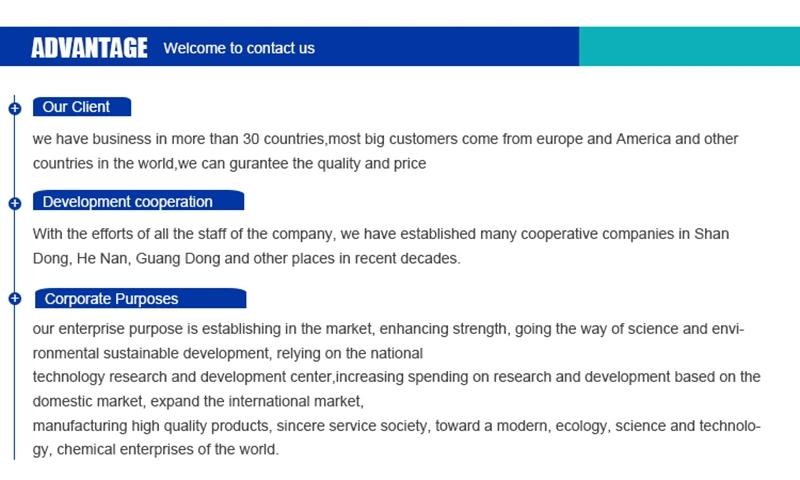
Company Profile Introduction
You may like
Recommended supplier
| Product name | Price | Suppliers | Update time | |
|---|---|---|---|---|
| $0.00/1g |
VIP1Y
|
BEIJING SJAR TECHNOLOGY DEVELOPMENT CO., LTD.
|
2024-11-15 | |
| $25.00/1ASSAYS |
VIP6Y
|
Hebei Weibang Biotechnology Co., Ltd
|
2024-10-28 | |
| $150.00/5ton |
VIP1Y
|
Aurora Industry Co., Ltd.
|
2024-09-02 | |
| $8.00/1kg |
VIP1Y
|
Shandong Deshang Chemical Co., Ltd.
|
2024-08-22 | |
| $0.10/1KG |
VIP6Y
|
Shaanxi Dideu Medichem Co. Ltd
|
2024-08-20 | |
| $10.60/1KG |
VIP4Y
|
Hebei Chuanghai Biotechnology Co,.LTD
|
2024-08-20 | |
| $3.50/1kg |
VIP1Y
|
Hebei Andu Technology Com.,Ltd
|
2024-08-17 | |
| $999.00/10ton |
VIP1Y
|
HEBEI SHENGSUAN CHEMICAL INDUSTRY CO.,LTD
|
2024-08-08 | |
| $6.00/1kg |
VIP1Y
|
HebeiShuoshengImportandExportco.,Ltd
|
2024-08-06 | |
| $0.00/1kg |
VIP2Y
|
Hebei Kingfiner Technology Development Co.Ltd
|
2024-06-18 |



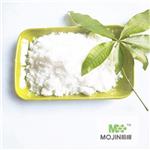
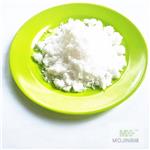
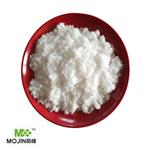
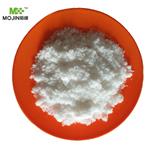
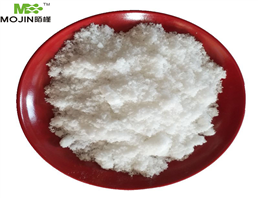
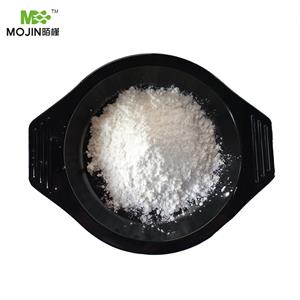
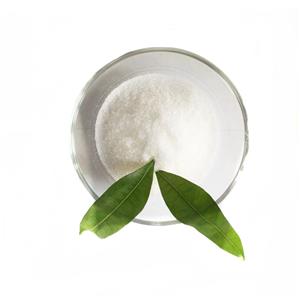

 Japan
Japan